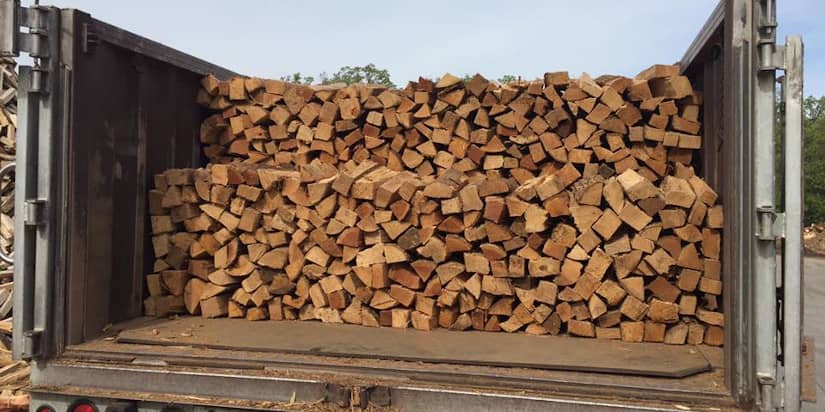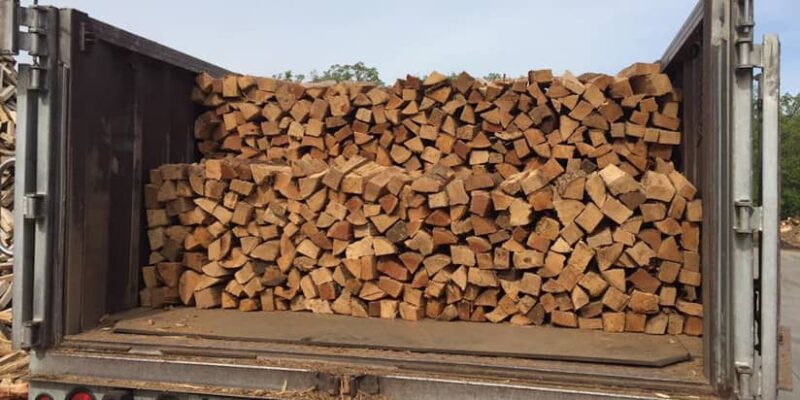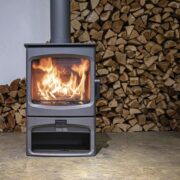Now, it is the time to stock up on firewood as the colder months approach. People worry about needing more firewood on hand, especially those who live in more remote areas and need access to heating and cooking.
It’s one of the least expensive ways to keep warm. In addition, it’s a sustainable resource that can help you break free of your reliance on fossil fuels.
One of the most crucial questions to ask yourself while ensuring a sufficient wood supply is how much you need. The alternative to having adequate storage space is having too much. For this reason, many novices enquire about the longevity of a cord of wood.
Overview of Rick of Wood
A cord is 128 cubic feet in volume and measures four by four by eight feet. Generally, a rick refers to a mound of hay or wood that is less than a cord but larger than a face cord.
Naturally, there will be more wood if you pack the logs closely together and less if there are huge gaps or cracks between them. A rick of wood, however, will typically weigh about 1800 pounds. However, the actual weight may range from 680 to 2850 pounds.
How Long Does a Rick of Wood Last

During the winter, a complete rick of wood can provide sufficient heat for a dwelling for anywhere from six to ten weeks. Several factors affect how long wood will survive. Hence, you should always have more than you anticipate using.
The rope will be thicker and longer than softwood trees if you use hardwood trees. Thus, knowing the composition of the wood is essential. You may need to order multiple complete cords, depending on your location and the severity of the weather in your area.
When it comes to purchasing firewood, the cord or rick is the best unit of measurement. A full cord or a face cord is also available for purchase. Firewood isn’t just for keeping warm in the winter; it has year-round applications in the kitchen and at the campsite.
The wood, space size, insulation, and other factors can significantly affect drying time; a range of six to ten weeks is typical when you stock up on firewood for the following cold season; it’s essential not to fall short.
Heating a tiny 1,000 square feet or less dwelling during a moderate winter could also take half a cord for up to two months. It indicates that a cord of wood provides sufficient heat for a small house for about eight to twelve weeks. Utilizing an extension cord for up to six months is possible if you have a backup heater.
What if your house is 1,800 square feet, and you need to heat it? Three to four cords of wood are sufficient for a winter. However, you can reduce wood use if the home is effectively insulated and there are no air leaks. Moreover, if you use spray foam insulation, you drastically reduce the amount of wood you need to keep warm, which provides a tight seal.
If utilized solely for heating, half-full cords may be sufficient for a few homes with 1200 square feet in size to get them through the winter. So, a cord can serve you well for two months.
Confused by firewood terms? ‘Rick vs. Cord: The Ultimate Comparison’ on our blog provides clear answers.
The Last Word
Depending upon your needs, you may need to increase or decrease the amount of food items you purchase annually. Those who enjoy lighting fires for grilling or camping only need a rick.
On the other hand, if firewood is your primary heat source throughout the winter, you will likely need a cord. It will be used fully throughout the colder months for heating homes of various sizes. Take care in how you stack your fire as well. You must store it in a dry or insect-free area.
Frequently Asked Questions
How Many Wood Ricks Do I Need for The Season?
The typical household only needs two to three weeks of wood to survive the winter. Storing at least one rick away is wise in an ice storm or other emergency. You should purchase two to three weeks of firewood for the season.
How Many Logs per Day Should You Learn?
For a big open fireplace with no air restriction devices installed, a good starting point is to consider one chord for eight full days of burn. You can use one code of wood every 30 to 60 days in a non-catalytic stove and the same amount for a season in a high-efficiency catalytic food stove.
Which Wood Has the Longest Burn Time?
Hardwood such as Madron, Live Oak, Hickory, and Walnut, and fruit trees like apple or cherry are suitable investments for firewood. Denser and more resistant to decay, hardwoods burn hotter and longer than softwoods, although they take longer to season.
Does Burning Wood Cost Less than Other Fuels?
Energy-saving organizations estimate that using a wood burner can cut heating costs by up to 10 percent. Woods stoves are currently 13 percent cheaper than gas and 33 percent cheaper than electric heaters under the existing price cap. Log burners are efficient, averaging 75 percent to 90 percent.
Be sure to check out these other posts for more fascinating insights:










Comments